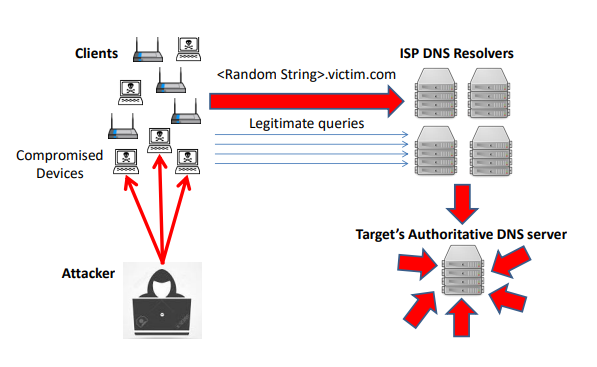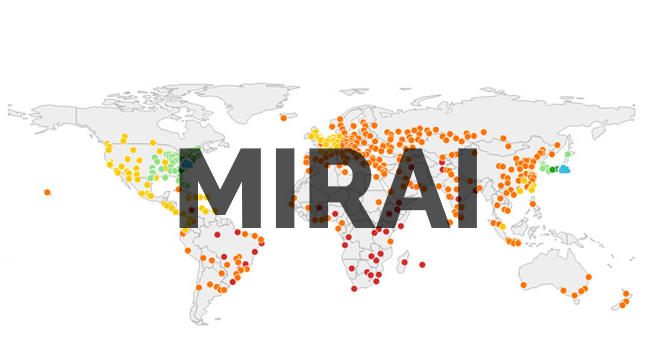This repository contains implementation for the Mitigating DNS random subdomain DDoS attacks by distinct heavy hitters sketches paper http://www.faculty.idc.ac.il/bremler/Papers/HotWeb_18.pdf [1]
Mirai is the code name of a well-known malware that infects IoT devices, turning them into a remotely controlled bots. This network of remotely controlled devices known as botnet can be use to launch distributed denial of service(DDOS) attack. Denial of service happens when too many requests are sent to server and the server can't fulfill more requests and as a result starting to reject user's requests. In October 2016 Mirai's botnet was used to launch DDoS attack directed to Dyn, a major Domain Name System(DNS) provider. this attack had major impact on well known companies including AirBnB, Netflix, PayPal, and GitHub.
The "Mitigating DNS random subdomain DDoS attacks by distinct heavy hitters sketches" paper describe how to use noval data sketch algorithm, distinct weighted sampling heavy hitters(dwsHH), to detect DNS random subdomain DDoS attacks like the one that happened in the Mirai case.
In the random subdomain attack many DNS resolve requests are sent to the DNS server for single or few victim domains. The big amount of randomly generated DNS requests coming from the botnets devices causing the DNS server to be overwhelmed and to start reject authentic resolve requests.
view the report.pdf to learn more
First download the code by git clone this repo:
git clone https://github.com/galprz/dns-random-subdomains-ddos-attackThen use conda to install dependencies and setup the environment
conda end update -f environment.yml
conda activate dns-random-subdomains-ddos-attack - utils/data.py contains helpers to download the dataset
- algorithm.py contains the dwsHH and classic heavy hitter algorithm implementation
- experiment1.ipynb contains the evaluation of the dwsHH as a distinct cardnality estimation
- experiment2.ipynb contains the evaluation for the end 2 end detection system suggested by the paper
- report.pdf report that covers [1] and [2]
Google colab links to view notebooks:
experiment 1 - https://colab.research.google.com/drive/1Yk-uiUmInENKCm4NXL1ATxLtmD4bWXad
experiment 2 - https://colab.research.google.com/drive/1uWzWik50PpAt4UqVFQCM8g0TbjJcWCno
@article{1,
author = {Feibish, Shir Landau and Afek, Yehuda and Bremler-Barr, Anat and Cohen, Edith and Shagam, Michal},
title = {{Mitigating DNS random subdomain DDoS attacks by distinct heavy hitters sketches}},
year = {2017},
month = {Oct},
isbn = {978-1-4503-5527-8},
publisher = {ACM},
doi = {10.1145/3132465.3132474}
}
@article{2,
author = {Chabchoub, Yousra and Chiky, Raja and Dogan, Betul},<br>
title = {{How can sliding HyperLogLog and EWMA detect port scan attacks in IP traffic?}},
journal = {EURASIP J. on Info. Security},
volume = {2014},
number = {1},
pages = {1--11},
year = {2014},
month = {Dec},
issn = {1687-417X},
publisher = {SpringerOpen},
doi = {10.1186/1687-417X-2014-5}
}

